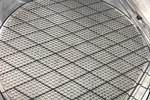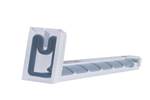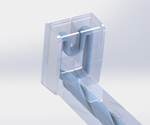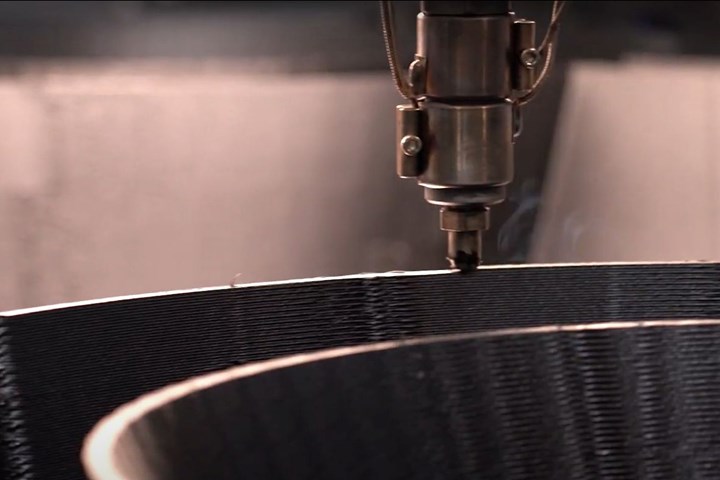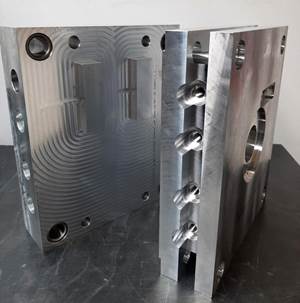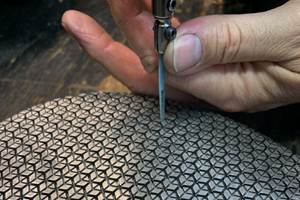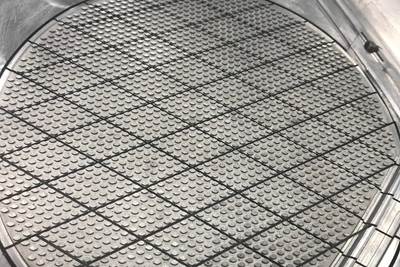
3D printing mold inserts can produce 80-98% complete inserts, including heat treatment, requiring minimal to no finish machining. Photo Credit, all images: Next Chapter Manufacturing
Specialization has allowed mold builders to concentrate on building molds for specific industries like medical, packaging or automotive. Unfortunately, it has also divided the industry, often putting mold builders at odds to protect their “turf.” Instead, the moldmaking community should be seeking partnerships that act as a force multiplier.
This approach is incredibly impactful for additive tooling or 3D-printed molds — polymer 3D printing for low volume and metal 3D printing for high volumes to produce geometries not possible with conventional machining techniques.
Molders use additive manufacturing (AM) to reduce cycle time and eliminate common molding defects and scrap. However, despite some mold builders experiencing 3D printing’s benefits firsthand, they have been slower to embrace this technology due to misconceptions about its capabilities.
Here are two reasons mold builders should consider partnering with additive tooling specialists to effectively employ 3D printing and maintain a competitive edge.
-
Focus on what you do best — entire mold builds.
Over the past couple of decades, we have seen hot runner molds emerge as the preferred method of melt delivery over cold runner molds. In the beginning, many moldmakers built their hot runner systems. Still, as part designs got more complex and material types exploded, it became clear that the companies specializing in hot runner technology offered consistent solutions that solved some of the most demanding molding requirements for part quality and efficiency.
In the same way, we can increase the success of additive manufacturing (AM) in moldmaking by encouraging mold builders to partner with specialists who have the experience and deep understanding of thermal management in a mold and know how to efficiently build for AM to withstand the rigors of production injection molding.
While manufacturing hot runner systems requires the same machine tools and machining methods as moldmaking, the expertise required to design and build hot runner systems is why many moldmakers partner with hot runner companies for their success. Again, for the same reason, moldmakers should consider focusing on building entire molds while using AM specialists to identify and design the most efficient use of conformal cooling, venting and complex molding details to produce results that exceed the end customer’s expectations.
AM for molds has been around for quite some time, so finding partners with expertise in that technology and moldmaking and molding is not as hard as you would think. When evaluating partners, ask for examples of similar projects that demonstrate a likeness to molds that your shop builds. This level of transparency will create reliable partnerships and ensure success every time.
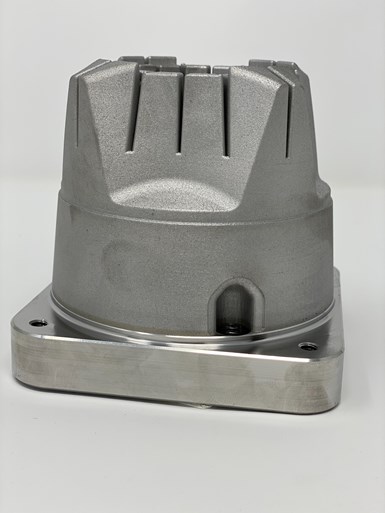
When evaluating 3D printing partners, ask for examples of similar projects that demonstrate a likeness to molds that your shop builds.
-
Solve bottlenecks in your moldmaking process.
Building partnerships that involve experienced AM resources can also solve bottlenecks in your moldmaking process, such as waiting on steel, heat treatment, programming and complex geometry requiring significant EDM and electrodes. For example, 3D printing mold inserts can produce 80-98% complete inserts, including heat treatment, requiring minimal to no finish machining (only polishing and surface treatment, if needed).
You can 3D print inserts in days, even for high-cavitation molds that require multiple inserts.
Imagine reducing your electrode carbon cost by 50-80% and your cutting tool cost by 30-50% by avoiding roughing and minimizing finish cutting and EDM. These are significant leaps forward and are becoming the new standard of how molds are built.
The days of reliability, size and materials limitations with 3D printing have been replaced with an explosion of AM technologies and materials. Now is the right time to explore and build partnerships to maximize your moldmaking capabilities and offer the right solution to your customers.
Related Content
How is an Aluminum Mold Energy-Efficient?
Nine ways aluminum molds save energy and production costs.
Read MoreWhy Mold Builders Should Consider Barrel Cutters and Lens Tools If They Haven’t Before
Reduce machining cycle times and improve surface finishes of cavity and core work with barrel cutters and lens tools.
Read MoreHow a Small Programming Change Cuts Cycle Time in Half
Overriding the CAM system when milling a series of lifter pockets helps to improve metal removal rate and increase feed rates.
Read MoreHow to Polish Ribs for Proper Part Release
Using the right tools and abrasives is essential to polish a mold to the required final finish.
Read MoreRead Next
How to Improve Mold Venting with Metal Additive Manufacturing
Patented 3D-printed mold insert design rapidly evacuates gases while preventing plastic flash-through, eliminates costly maintenance and need for press-side temperature-control units.
Read MoreHow to Design a Mold with Additive Tooling
Designing molds with additive tooling implementation in mind requires blending traditional mold standards with innovative new ideas of what is possible to push the limits of mold performance.
Read MoreSelling the Value of Additive Tooling in a Mold
Gaining molder buy-in for a conformal-cooled mold insert requires communicating the mold’s total cost of ownership over the life of the project.
Read More

